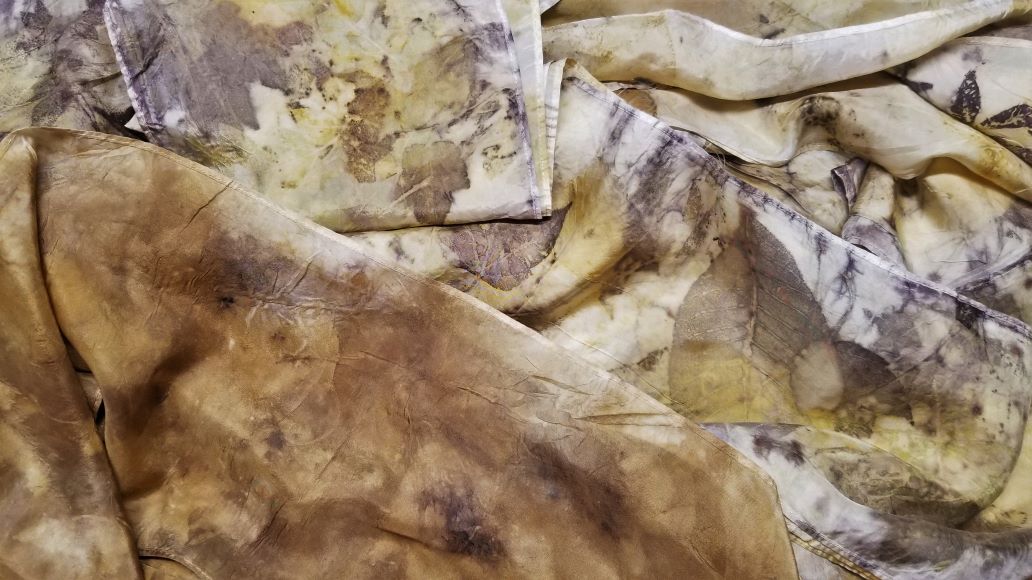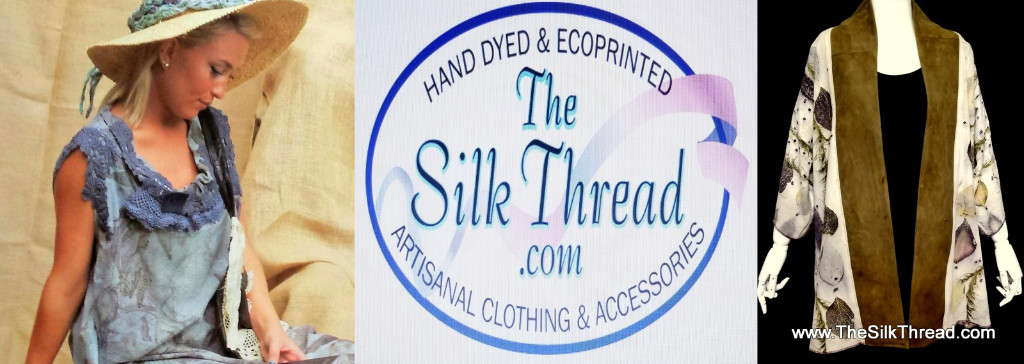The Real Key to Ecoprinting
- Theresa Filarsky

- May 29, 2019
- 2 min read
The Real Key to Ecoprinting
It is interesting to listen to my customers at a show when I briefly explain the basics of ecoprinting. “Oh so these are real leaves and you just lay them down to get the imprint?” is a common reply! Or maybe you have seen a few images on blogs or Pinterest of a few lightly wrapped “bundles” tied loosely with a beautiful ribbon? Well, let’s talk about what the key is to the best prints with ecoprinting!
Ecoprinting or Botanical Printing seems to have popped up everywhere and for good reason-it’s fun! It’s not a new art form-it’s been around a long time and I enjoyed using leaves to imprint paper way back in my University days. 🙂
The world of art has changed dramatically of course since those days! The Internet changed everything. Methods and techniques I learned in my major course studies of Commercial Art and Printmaking have undergone some of the biggest changes. Little is hand drawn now and certainly lithographs and etchings are no longer commercially viable! But what has not changed in printmaking are the basics. ALL Successful (non-inkjet) printing requires contact and pressure! Block printing, lithographs, etchings, woodblocks, screen printing, typewriters and ecoprinting to name a few, all require contact with the surface plus pressure to create an imprint.
So the key to successful ecoprinting is not the leaves or the mordants or even the heat. All that is of little or no value unless PRESSURE is applied to create sufficient contact. That is what printing is all about.
So, how do we achieve the required pressure? Humor me while my art history kicks in 😉
Take a look at this image of the 1440 Gutenberg press if you want an idea of pressure!
So basically, in traditional printmaking, you “ink” your metal, plastic, rubber or wood template, lay the paper or fabric onto the “printing plate” surface, apply pressure…. and you have an imprint!
The popularity of stamping designs onto paper and fabric may seem recent but it’s not. India had been using wood blocks to imprint designs on their fabrics for centuries. I have a number of these beautiful wood blocks and they all require pressure to succeed.
Applying pressure to imprint a design onto cotton in India
Most people don’t realize that the photos of the American Civil War that were put into papers and most famously Harper’s Weekly were created by having woodcarvers, each with a section of the drawn out photos, carve his portion to combine under the printing press. Again-pressure 🙂
A sectioned wood block used to imprint into Harper’s Weekly during the Civil War
The old linoleum blocks we used in art classes have given way to a softer, easier to carve “soft cut” linoleum block that make it easy for any artist to make their own designs in a fraction of the time. Below are a few that I have carved for use on both my wool and silk fabrics.
So pressure plays the key role. When ecoprinters use words like “Bundling tightly” or tight Bundles, we can get an idea of the pressure involved when we understand that printing in its original context, means pressure!
You can imprint a leaf or flower on fabric simply by subjecting both to enormous pressure (see first image!) But by far the easiest method to achieve as uniform contact as possible involved laying leaves onto the designated fabric and rolling the pieces into tight bundles using pipes of copper or wood as the central pivot. The final wrapping of the rolled piece with string adds to the tightness of the bundle. People who are unaware of ecoprinting or beginners to this art form often envision this and little more. It is accurate but just the first step. Rolling this piece tightly on a wood dowel and finally tying with twine will result in a “bundle” like the one below.
This bundle is larger than usual as it just happens to be 3 yards of 45″ raw silk. It was folded, leaves inside, rolled and tied into this small missile like size and ready for the steaming pot! If I had kept it spread onto a table, exposing the leaves to the heat of the sun, very little would have happened. I tried once in an experiment. I had a piece of silk, topped with leaves and clear glass. I had contact, but no pressure. I did not even get stains :-).
The result of one large piece of properly bundled silk noil.
I’ve seen the use of shrink wrap rather than twine but I prefer not to use much plastic if I can help it. And besides I don’t mind the resulting “string marks” from the twine. And if you do not like those marks? Well use fabric strips instead of twine!
Learn to wrap tight bundles to ensure full contact with your plants to the surface and you will have mastered the real key to successful ecoprinting! It is simply another form of printmaking.
Share this:

Like this:
Like Loading...






Comments